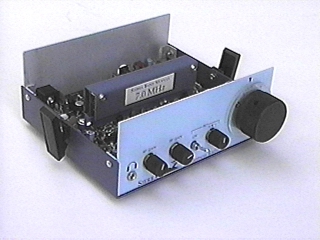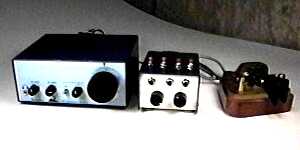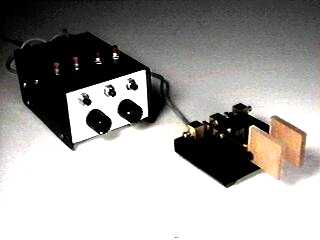
KØSU

This is really for fun. I want to show off some of the things I have done with QRP. Technically speaking, QRP means "reduce power" but over the last few years it has become synonymous with low power operating. Today the definition of QRP operation is a maximum of five watts of output power. I think it goes beyond that however. I believe QRP is a "way of thinking." QRP ops I know today embody the spirit of Ham Radio I learned over 35 years ago when I first got started. The very nature of low power operation makes everyone a better operator if they are going to succeed. Not only that, I think QRP ops tend to be friendlier and more helpful to their fellow operators. This is my soapbox, so that doesn't mean everyone agrees.
Now that I am off the soapbox, here is a picture of the Wilderness Sierra I built a couple of years ago. This rig was originally designed by Wayne, N6KR as a NorCal project, then produced commercially by Wilderness Radio. It is a multi-band rig with plug in modules for each band. I think it is the best of the home built rigs on the market today.

Here is a closeup of one of the modules without its cover. Yes, winding all of those toroids does take patience.

As you can probably tell by now, I like to build things. Here it the first set of paddles for QRP operation I built. The original design is by Floyd, NQ7X. These are called the Mini-mag Paddles and they are a real gem. I used aluminum for mine instead of brass like Floyd specified. That is a great part of homebrewing, you can use whatever works for you.
Those paddles were built to go with an electronic keyer. The one I built is the Island Memory Keyer. I haven't quite finished it. I still need to do the lettering. You should see the stack of projects on my workbench. Here is the partially completed keyer.
This is a picture of my Sierra, the Island Keyer, and my Vibroplex Paddles. I used this setup for the first time a few nights ago and worked the infamous Fox, of QRP-L fame.



All of the opinions about rigs are mine, I don't have an affiliation with any of these folks (other than being a NorCal member). Just a satisfied customer!
A late news flash. Under the Christmas tree was a Ten-Tec Argonaut 509. This is one of the classics of QRP rigs. I used the Argonaut 509 during the FYBO QRP contest sponsored by the Arizona ScQRPions in Feburary. I stayed home but it was a lot of fun. The highlight for me was working Hawaii on 15 meters! Nice to have that band open again. Come on sunspots!!

Here are a few of my favorite QRP sites you might want to look at. There are certainly far too many good ones for me to list all of them here.
